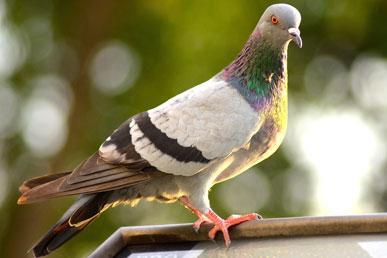The fauna of our planet will never cease to amaze us with the presence of amazing creatures of the most unusual shapes and colors. Some of them are so whimsical that it seems that nature created them in a playful mood. We present to your attention another selection of the most amazing, unusual and little-known creatures from different parts of the globe.
Soldier's lapwing
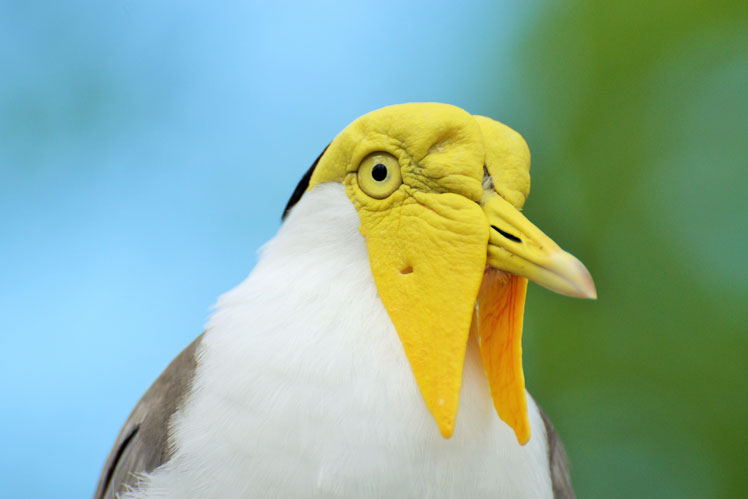


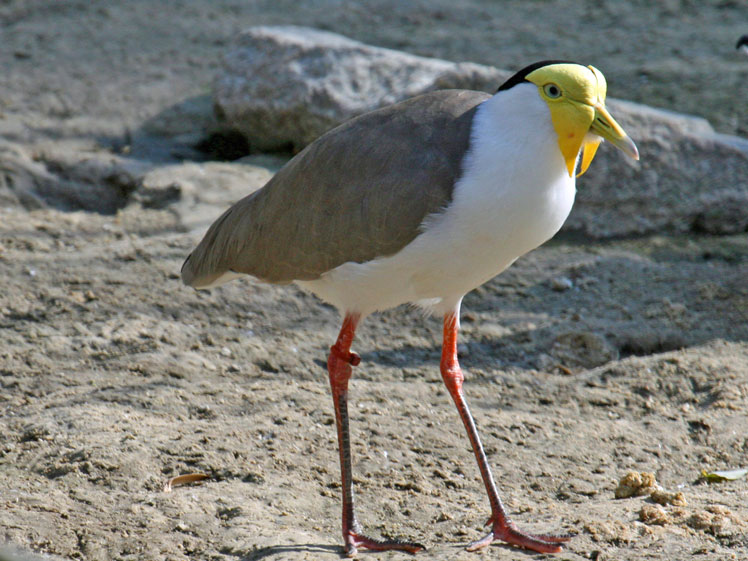
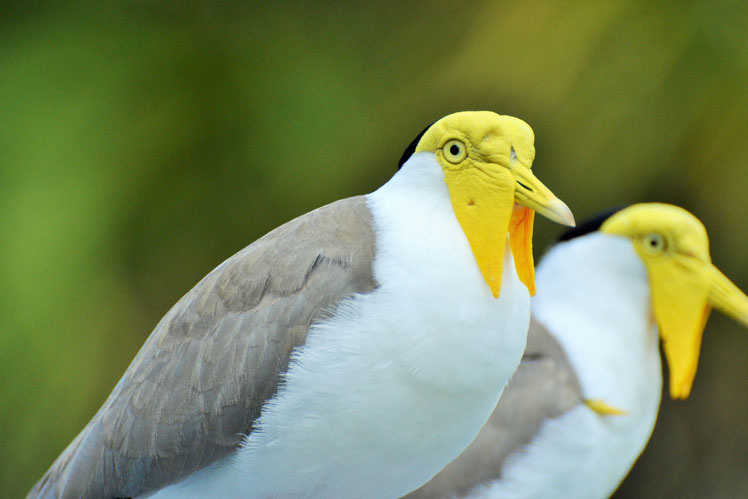
The soldier lapwing lives in Australia, Tasmania, New Zealand and New Guinea. Its habitat includes primarily open meadows, fields and swampy areas. He is not afraid of the proximity of human settlements and is often found in city parks.
The soldier lapwing reaches a size of up to 35 cm and weighs up to 450 grams with a wingspan of about 85 cm. Males and females look the same.
The soldier lapwing feeds on insects, spiders, worms, crustaceans, and plant seeds. It occurs in pairs or small groups. The life expectancy of a soldier's lapwing is 20 years.
Genete




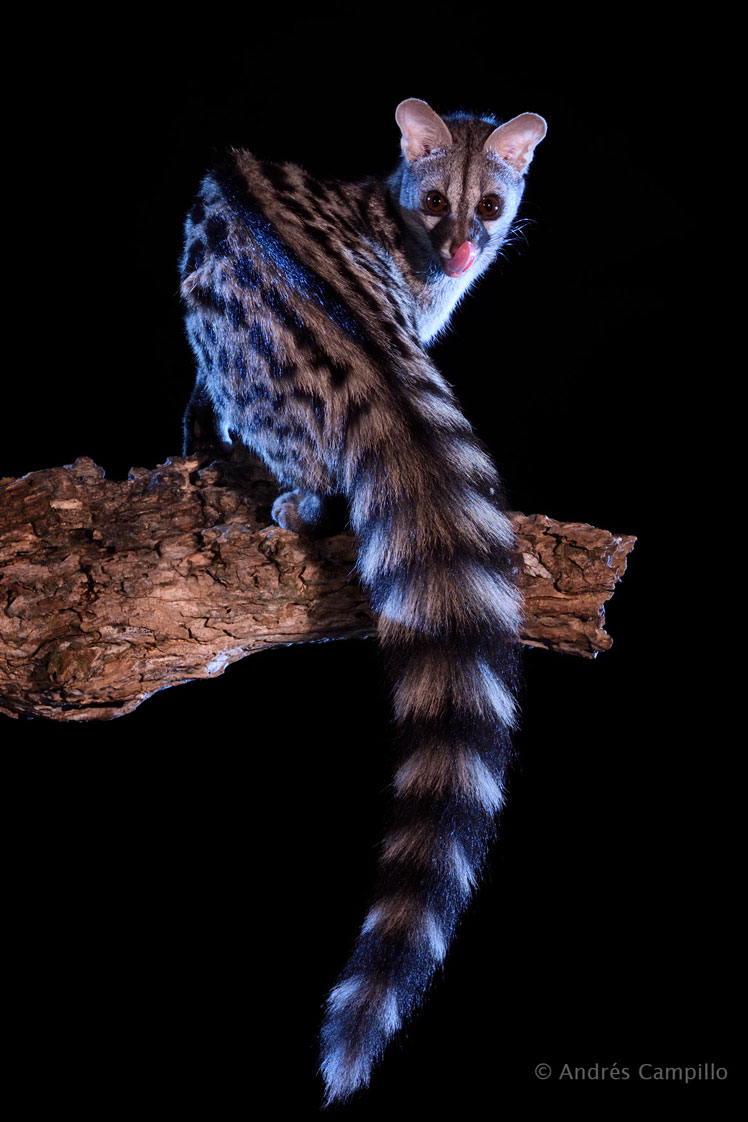
Geneta is a predatory animal similar to a cat, only larger. Genets are easily tamed; in Africa they are sometimes kept at home to exterminate rats and mice. For a short time in the early Middle Ages in Europe, genets were pets, but in this capacity they were quickly replaced by cats.
Geneta has a long (up to 100 cm) and unusually flexible body, covered with short, rather coarse hair; spotted color; fluffy tail, up to 50 cm long; at its base are glands that secrete a sharp-smelling liquid – musk.
Genets are distributed mainly in the savannas and tropical forests of Africa.
In habits, genets resemble ferrets. They feed on small animals, birds and their eggs, as well as invertebrates. Sometimes they harm poultry farming. They lead a predominantly nocturnal lifestyle.
A prominent place in the diet of all genets is occupied by fruits, and an ordinary genet is not averse to robbing someone's garden or house, and in gratitude to leave a bunch of litter on the roof of the owners.
In West Africa, the forest geneta often raids chicken coops at dusk. During the day, the genets sleep somewhere in a tree or in a lair among the stones, curled up in a ball and covered with a long tail.
There are 14 species in the genus Genet. The most common species is the common genet. Its parameters correspond to the size of a domestic cat, but it is somewhat elongated. The common genet is widespread throughout Africa, and is also found in Southwestern Europe (Spain, France), where it inhabits wooded and treeless mountains and lowlands, living mainly near water bodies. These predators make similar sounds with cats in different situations.
Golden tail gecko
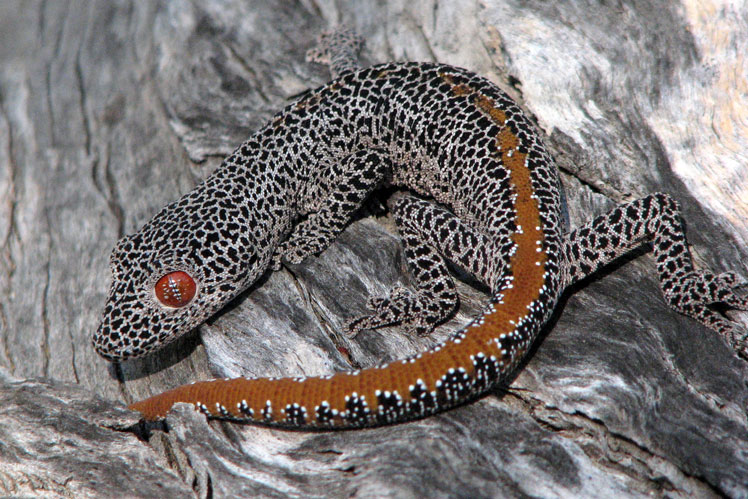
Strophurus taenicauda (also known as the golden-tailed gecko or Australian gecko) is an unusual lizard found only in Eastern Australia: found in New South Wales and Queensland.
There are three subspecies of this gecko. Preferred habitats of the golden-tailed gecko are forests and shrubs.
This gecko is nocturnal – it wakes up at night to hunt insects such as crickets, cockroaches, locusts.
Big-eared fox





The big-eared fox is a predatory mammal of the canine family, the only species of the genus. The scientific name of this animal is translated from Greek as "big-eared dog". It looks like an ordinary fox, but smaller and with disproportionately large ears.
The length of her body is 46-66 cm, the height at the withers is up to 40 cm, while the ears are very large – up to 13 cm. The front paws of the big-eared fox have five fingers, the hind legs have four.
A distinctive feature of this species is the dental system, which has 48 teeth. This is the maximum number of teeth for terrestrial placental mammals. The teeth of this fox are small, the bite is weak, which is explained by the peculiarities of its diet.
The big-eared fox is found in two areas of Africa: from Ethiopia and southern Sudan to Tanzania, and from southern Zambia and Angola to South Africa. This distribution is associated with the habitat of its main food – herbivorous termites of the species Hodotermes mossambicus.
Inhabits dry savannahs and semi-deserts, sometimes close to human habitation. Active mainly at night; In South Africa, big-eared foxes are diurnal in winter and nocturnal in summer.
The diet of the big-eared fox consists mainly of insects and their larvae: 50% are termites, the rest are beetles and locusts; less than 10% are lizards, small rodents, bird eggs. Occasionally eats plant foods. Does not attack pets. It receives moisture from the liquid contained in the feed.
The big-eared fox is quite numerous, even the expansion of its former range to Mozambique, Zimbabwe and Botswana is observed. Cultivation has been beneficial to her, because the developed lands and pastures are inhabited by insects that these foxes feed on. The main threats to the number of eared foxes are hunting – their meat is edible and the fur is used by local residents.
Frogs adelphobates
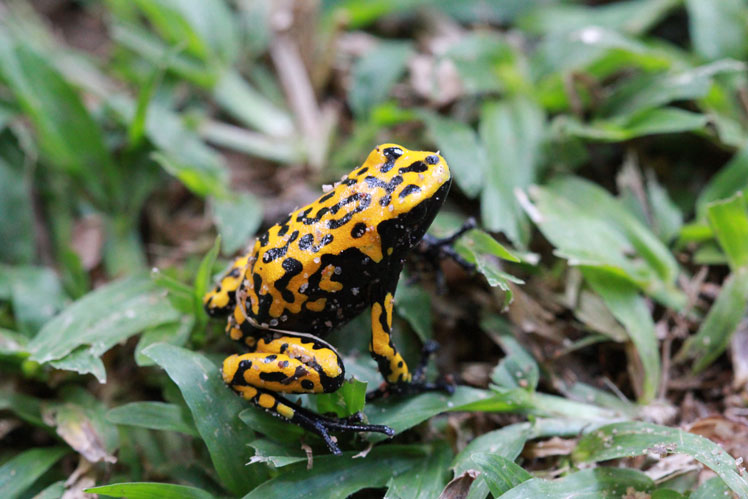

Adelphobates is a small genus of poisonous frogs found in the central and lower Amazon basin of Peru and Brazil, possibly Bolivia. There are 3 types of frogs in the genus, all of them have an unusual color and smooth skin.
These frogs were assigned to a separate genus, isolated in 2006. To a large extent, they are similar to representatives of the tree climber genus, differing only in molecular and genetic features.
These frogs love tropical rainforests. They are active during the day, spending considerable time in the forest litter. They feed on small insects.
The total length of representatives of this genus ranges from 1,6 to 4 cm. All species are brightly colored, their main background is glossy black with white or orange spots of various sizes.
We also recommend:
◆The most bizarre creatures on the planet (part 32)





